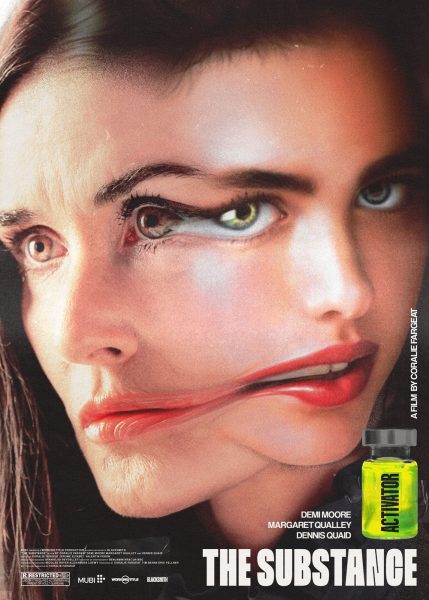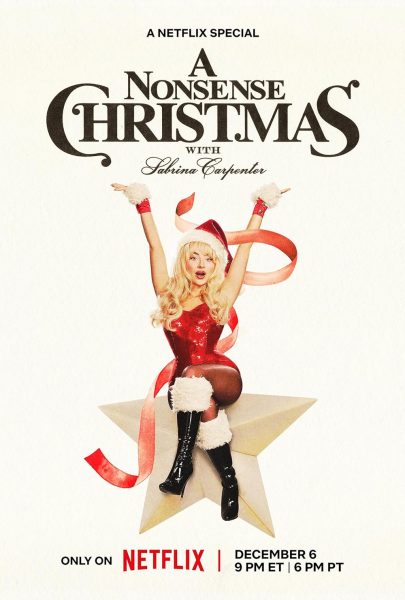Will Netflix’s cancellation of ‘Inside Job’ impact animation?
The end of a show often leaves people feeling empty and questioning what will happen in the next season. But what happens when a network discontinues a series that fans have excitedly followed?
Netflix’s recent announcement that “Inside Job” would not be renewed has brought to light Netflix’s frequent termination of small shows. From 2018 to now, Netflix has canceled 46 shows from 2019-2023 after only one season was released.
Some of these shows include “I Am Not Okay With This,” “Julie and the Phantoms,” “The Midnight Gospel” and now “Inside Job” — all shows with IMDB ratings above 7.5. Since Netflix releases little explanation or data, viewers are left confused.
Junior Nick Vargas felt the cancellation of “Julie and the Phantoms” was unwarranted.
“I don’t think the cancellation was fair because there was a lot of traction,” Vargas said.
“Julie and the Phantoms” had an active fanbase that started a petition with over 200,000 signatures to get a season 2 of the show.
The quality of shows seemed to confuse watchers as well.
“I think that there are definitely way more entertaining shows that got canceled to keep shows on like ‘Riverdale’ and um, I think it’s definitely unfair,” junior Uma De Dios-Dino said.
According to IMDB, “Inside Job” has a rating of 7.7, and “Riverdale” 6.6, meaning Netflix may not choose which shows to keep based on fan ratings. Additionally, “Riverdale’s” 6th season premiere had a 50% viewership drop-off from its 5th season premiere. This contradiction leaves viewers unsatisfied.
Some people feel as though Netflix’s devotion to profit damages the creativity and vision of some shows’ creators.
“I think that’s sort of a pattern people have been pointing out — that if shows don’t turn into huge successes like ‘Wednesday’ or ‘Stranger Things,’ then Netflix tends to like, lean towards canceling them,” sophomore Lin Urizar said. “When you’re trying to make as much stuff as you can as cheaply as possible, then you definitely do lose the quality of what you’re making.”
“These shows had the potential to be so much more, and they were sadly cut short or were forced to rush their endings,” President of Lane Tech’s Webcomic Club Angela Rose Goce said.
“Art and entertainment shouldn’t be for profit, they should be for like, joy.” De Dios-Dino said.
While artistic touch is necessary for most shows, animated shows face an obstacle with their target demographic.
“Some people are more skeptical to watch them because they might think that it’s like a kid’s show—when it’s really for everybody,” said De Dios-Dino.
Some animated shows face the opposite issue.
“There have been so many instances where shows were forced to censor themselves and make their shows be more ‘family-friendly’ because they see very young kids to be more profitable than teen/adult audiences,” Rose Goce said.
Additionally, the animation process is much different from creating a live-action show and requires many specialized artists, depending on the series.
“Animation is not an easy thing to do, so just suddenly canceling shows puts hundreds of people out of work,” Urizar said.
De Dios-Dino related the cancellations to voice actors.
“I think that because less animated films and shows are being created, less voice actors are being hired, which is kind of sad because voice acting should be appreciated more,” De Dios-Dino said.
Netflix’s model of releasing all episodes to a season at once could impact the success of animated shows.
“I think that the binge model does create an unhealthy work ethic for lots of, like, just showrunners in general but especially animation,” Urizar said.
Some people don’t think the binge model is the culprit of animation success. “It really has to do with advertising, who the audience is, and how the production company treats the show,” Rose Goce said. “I think a lot of Lane students are probably very discouraged to be animators after all of these cancellations.”
Goce brings up the idea that large companies may not be the easiest to work with when it comes to animation.
“Working for big animation companies is a double-edged sword, as getting your animations seen by millions is such a wonderful opportunity, but is it really worth it if a lot of things end up being cut or canceled?” Rose Goce said.
Lane students don’t have to give up on their shows or dreams of being an animator. Large media studios such as Netflix are not the only sources of animation. Even without corporate funding, animators have found ways to express their creativity.
“I upload my animatics on youtube and it’s so rewarding to not only see your own creations put together, but also to see how many others saw your works with you,” Goce said.
Your donations directly fund the Lane Tech student journalism program—covering essential costs like website hosting and technology not supported by our school or district. Your generosity empowers our student reporters to investigate, write, and publish impactful stories that matter to our school community.
This website is more than a publishing platform—it's an archive, a research tool, and a source of truth. Every dollar helps us preserve and grow this resource so future students can learn from and build on the work being done today.
Thank you for supporting the next generation of journalists at Lane Tech College Prep!

Iris is a junior and this is her first year with the Champion. Iris is in the Omega program and enjoys and has a passion for design. In their free time...





